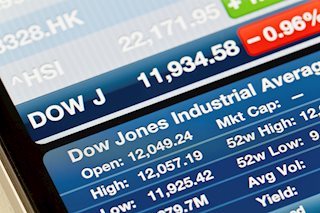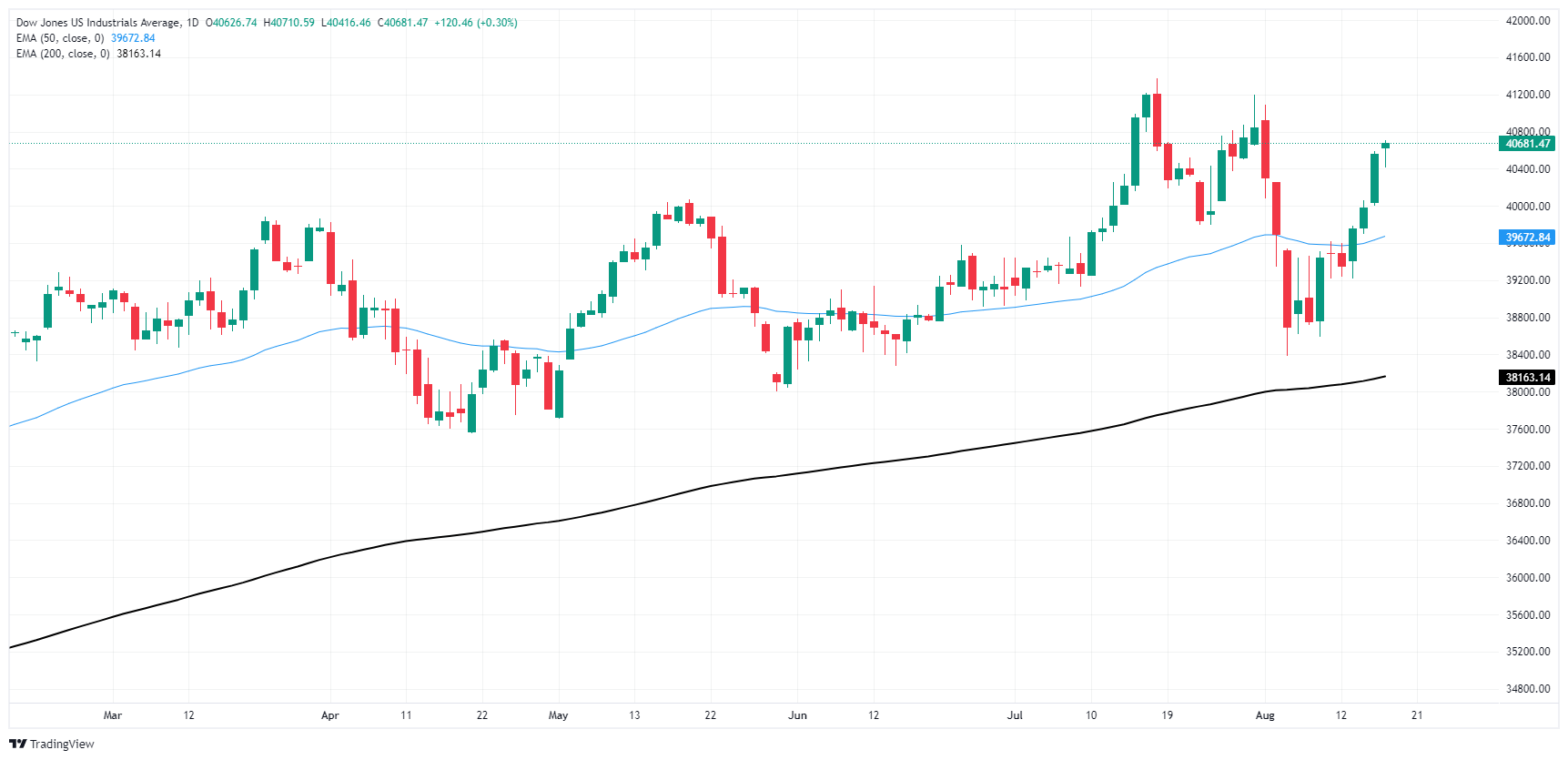Dow Jones Industrial Average climbs 100 points on Friday
|
- Dow Jones chalked in further gains on Friday as investors sentiment climbs.
- Equities are on pace for one of their best weeks of the year.
- Consumer sentiment indicators ticked higher on Friday.
The Dow Jones Industrial Average (DJIA) notched in 100 points on the high side on Friday after kicking the day off on the low side. Bids tested low early in the day before recovering the 40,500.00 level and investors are knocking on one of the index’s best single-week performances of the year to-date.
The Dow Jones is up nearly 4% from Monday’s opening prices as investors find the buy button after improving US economic data helped trader slough off broad fears of a US recession. The University of Michigan’s August Consumer Sentiment Index improved to 67.8, well above the previous 66.4 and beat the forecast 66.9.
Improving consumer sentiment indicators helped to bolster investor confidence further, despite UoM 5-year Consumer Inflation Expectations holding firmly at 3.0% MoM in August. Bets of a double cut from the Federal Reserve (Fed) in September have eased to just 25%, down from last week’s peak of 70%, but markets are still fully pricing in some form of rate movement on September 18, with rate markets putting odds of a 25 bps rate cut at 75%.
Dow Jones news
A risk-on Friday means the majority of the Dow Jones index was the green for the day. Less than a third of the DJIA saw red on Friday, with losses being led by Caterpillar Inc. (CAT) and Microsoft, which both fell around six-tenths of one percent. CAT traded near $343.15 per share, while MSFT battled it out near $418.60. Boeing Co. (BA) and Cisco Systems Inc. (CSCO) were neck-and-neck at the top of the boards, each gaining a little less than 2% on the day, with BA testing $180.00 per share and CSCO within reach of $50.00.
Read more: Nike stock gains on continued interest in Ackman stake
Dow Jones price forecast
The Dow Jones is knocking on a 3% single-week gain on Friday, poised to chalk in the index’s single best week-on-week performance in 2024. All-time highs at 41,371.38 set in mid-July have come back into view for bidders as DJIA prices grind their way back into the high side following last week’s brief dip below 38,500.00.
The Dow is testing deep into the green for the fourth straight day, trading within touch range of 40,750.00 after buyers took a thin technical bounce from Monday’s lows at the 39,250.00 level. Price pressures will begin to mount as bids approach 41,000.00, but the DJIA continues to put in a solid run as prices run well north of the 200-day Exponential Moving Average (EMA) at 38,053.00.
Dow Jones daily chart

Economic Indicator
UoM 5-year Consumer Inflation Expectation
The University of Michigan's Survey of Consumers includes a long-run, five-year, inflation expectation component that the Fed uses when calculating its quarterly Index of Common Inflation Expectations.
Read more.Last release: Fri Aug 16, 2024 14:00 (Prel)
Frequency: Monthly
Actual: 3%
Consensus: -
Previous: 3%
Source: University of Michigan
Information on these pages contains forward-looking statements that involve risks and uncertainties. Markets and instruments profiled on this page are for informational purposes only and should not in any way come across as a recommendation to buy or sell in these assets. You should do your own thorough research before making any investment decisions. FXStreet does not in any way guarantee that this information is free from mistakes, errors, or material misstatements. It also does not guarantee that this information is of a timely nature. Investing in Open Markets involves a great deal of risk, including the loss of all or a portion of your investment, as well as emotional distress. All risks, losses and costs associated with investing, including total loss of principal, are your responsibility. The views and opinions expressed in this article are those of the authors and do not necessarily reflect the official policy or position of FXStreet nor its advertisers.